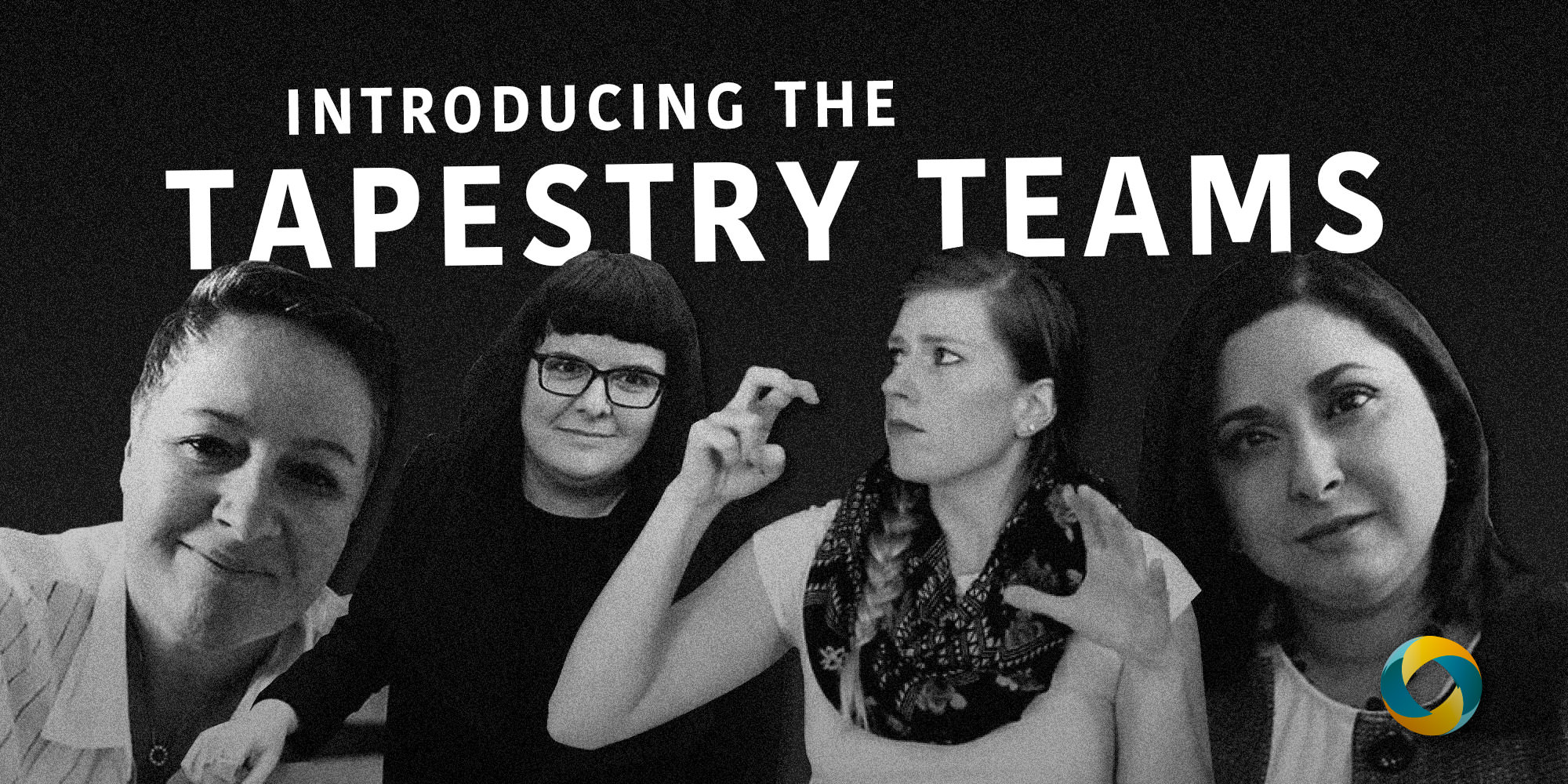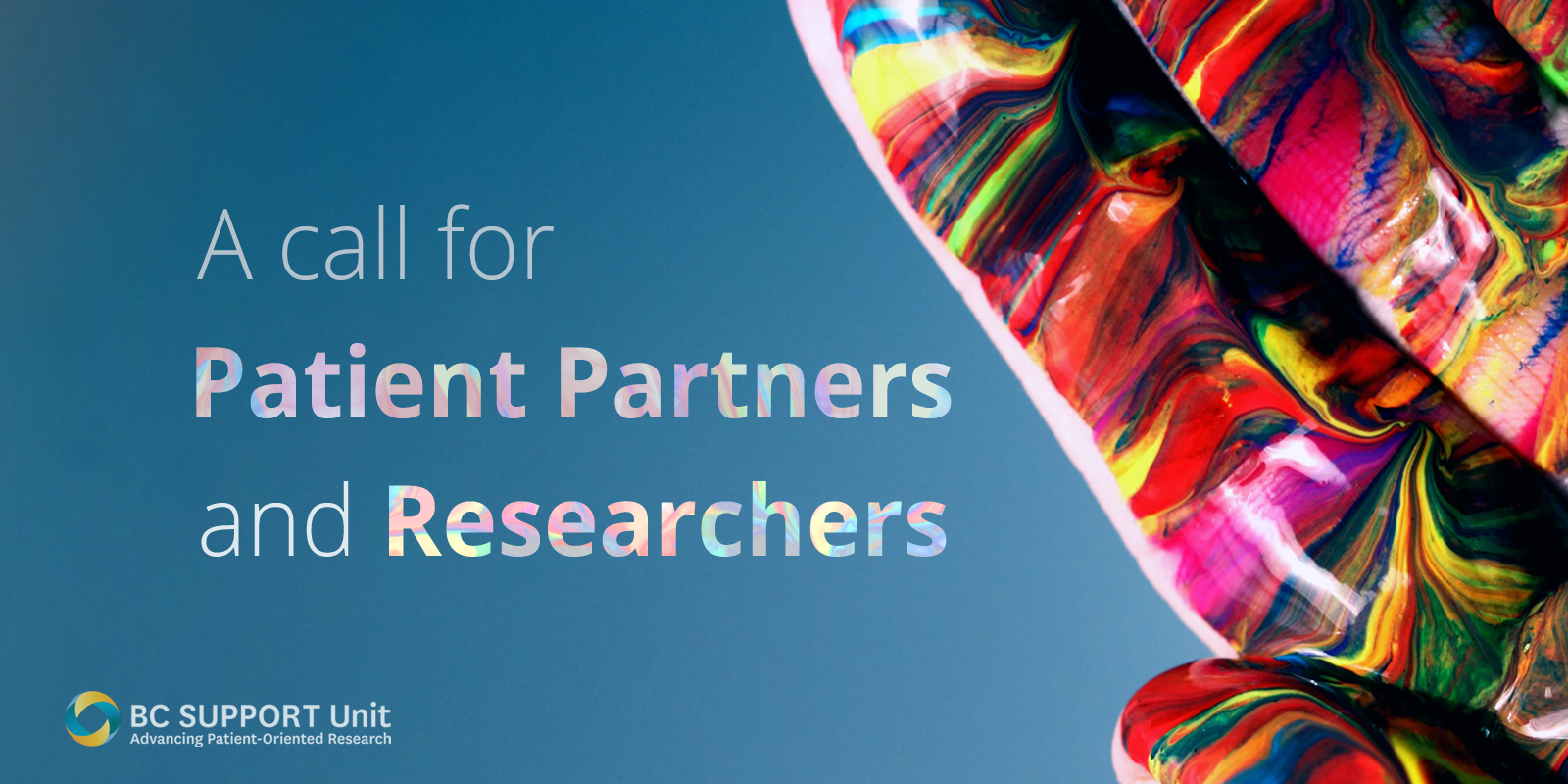Update: We are happy to report that the modules described in this article are now open to the public! Are you interested in learning about how to meaningfully engage with patient partners from diverse backgrounds?
Have knowledge or resources to share? Interested in creating your own Tapestry? You can add your own content or ask questions by completing this Qualtrics form. We want to hear from you!
Patient engagement in research doesn’t currently reflect the rich diversity of BC’s population. Last fall we introduced our project to create educational modules on UBC’s Tapestry platform to help academic and diverse patient researchers forge and maintain meaningful partnerships in patient-oriented research. Meet the Tapestry teams — the people who answered our call for team co-leads and members to steer the content of the modules for these underrepresented groups:
- immigrant, refugee, racialized, and ethnocultural communities
- Deaf and Disabled communities
- LGBTQ2S+ communities
- rural and remote communities
The Immigrant, Refugee, Racialized, and Ethnocultural communities team
Lin Chen, patient partner co-lead
I am a community developer and facilitator who has worked with newcomers, older adults, people with disabilities, and Indigenous people. I’m passionate about health care quality improvement, collective impact, multisectoral stakeholder engagement, and applied research and evaluation. As a co-lead of the Immigrant, Refugee, Racialized and Ethnocultural team, I’m interested in contributing knowledge and skills to the development of the educational modules, to promote awareness and encourage participation by newcomers and those from racialized and ethnocultural communities in patient-oriented research.

Anita David
Anita David, patient partner co-lead
Since 2017, Anita had been involved in over twenty patient engagement opportunities and shifted her career to focus on community engagement and community-based research. She is passionate about advocating for the needs of people with lived experience and has consulted on research projects to create respectful, safe spaces for vulnerable populations including immigrants, refugees and ethno-cultural groups. She also provides training and support to Peer Researchers working on mental health, substance use and sexual health projects. Anita is also a member of the Mental Health Commission lived experience committee, which advises on key initiatives and priorities around mental health in Canada. During her downtime, Anita enjoys cuddling with her cat “Caaaaaat,” stretching her imagination by writing and doing improv theatre, and finding balance through yoga and meditation.

Hannah Burton
Hannah Burton, team member
I’m a psychiatry resident at the University of British Columbia. I have an interest in cultural psychiatry and am excited to be a part of the Tapestry team. I hope that this project will increase the diversity of populations studied in mental health research.
The Deaf and Disabled communities team

Mari Klassen
Mari Klassen, patient partner co-lead
I am currently a sign language instructor at Vancouver Community College. I grew up in Vancouver and graduated from Gallaudet University in Washington, DC, in 2013 with two BAs in ASL and Deaf Studies, and I received a Master’s degree in Sign Language Education. I am bilingual in ASL and written English. Besides work, I’ve played on the Canadian National Deaf Volleyball Women’s team for 13 years.
This Tapestry project is very important to me, as I want to educate people about the needs and rights of Deaf people. For many years, an older generation of Deaf people fought for accessibility and language rights, but there is still lots of advocacy ahead. I definitely want to grab the torch and do my part in educating those around us about ASL and Deaf culture so that we may improving access and inclusion for all Deaf people.
Gabrielle Peters, patient partner co-lead
The clarion call of disabled people fighting for rights and justice is “nothing about us without us”—which in reality means “nothing without us,” because everything is about us. Too often this has been translated into sticking a disabled person at the end of the table and smiling while ignoring their input. My involvement here is dependent on that not being the case. I am a woman who lives in poverty and has invisible and visible disabilities. I am disabled. I say the word, and it is an integral part of shaping my identity.
I bring with me my experience of trauma at the hands of those who were supposed to help me. I come with ghosts and as a witness to others. I am informed by critical disability studies and disability justice activists and crip theory. I am equipped with skills acquired from nonprofit management and as an award-winning journalist. I will do my best to cradle the stories that have been shared with me and the responsibility they demand of me.
I am accountable to disabled people, particularly those who are poor and multi-marginalized. I owe a debt to disabled people who fought for the rights I have and hold an obligation to those who will come after me. This is why I am involved in this work.

Rachelle Hole
Rachelle Hole, academic co-lead
It’s a privilege to work on the Deaf and Disabled Tapestry team. I am a hearing cis-gendered woman who lives with a chronic illness. I had the fortune of working with and in the Deaf community in the Lower Mainland, BC, for 20 years (but that was over 15 years ago), and I am thankful to those friends and colleagues who were patient with me and worked to educate me about Deaf culture, ASL, and the Deaf community.
I am passionate about critical disability studies and the ways they aim to disrupt and challenge ableism and assumptions about normalcy.
These interests align well with the aims of the Deaf and Disabled Tapestry module. I hope, while acknowledging the limits to our goals, that we will create a educational resource for health researchers interested in researching with Deaf and Disability communities that aims to be inclusive of the great diversity across the disability communities and the Deaf community.

Robin Metcalfe
Robin Metcalfe, team member
I am part of the Tapestry Deaf and Disabled team within my role as a Master of Social Work practicum student with the Canadian Institute for Inclusion and Citizenship at UBC Okanagan. I am excited about the collaborative nature of the Tapestry project, all that I am learning with the team, and the aims of the project to advance the meaningful participation of people with disabilities at all levels of health research.
The LGBTQ2S+ team

Beverley Pomeroy
Beverley Pomeroy, patient partner co-lead
As a member of the LGBTQ2S+ community, I find it incredibly meaningful to be a co-lead for the LGBTQ2S+ Tapestry team. Being a patient partner has provided me the opportunity to help inform the content of curriculum that will have a deep impact on how LGBTQ2S+ peoples will be engaged in research—which, in turn, will help improve health outcomes within our community as a whole. I encourage anyone who has an interest or desire to influence health research through their lens to find ways to get involved.

Travis Salway
Travis Salway, academic co-lead (he/him pronouns)
I am an Assistant Professor of Health Sciences at Simon Fraser University, where I work in affiliation with the BC Centre for Disease Control, the Centre for Gender and Sexual Health Equity, and the Community-Based Research Centre. My research seeks to understand, in collaboration with community partners, why LGBTQ2 people experience higher rates of mental health–related struggles and how public health interventions can equitably address these health inequities.
I joined the Tapestry project for two reasons. First, as someone currently leading a patient-oriented research project, I want to learn more about how to equitably improve participation of patient partners from socially diverse and historically underrepresented groups. Second, I would like to offer my own expertise in LGBTQ2-affirming approaches to research engagement, so that other researchers can learn from my experience. I hope that this project will inspire people to take action to create safe and inclusive research environments.
The rural and remote communities team

Charlene Burmeister
Charlene Burmeister, patient partner co-lead
I have over 10 years of experience in peer engagement and leadership, currently serving as the Person with Lived and Living Experience (PWLLE) Stakeholder Engagement Lead for the BC Centre for Disease Control (BCCDC), the Provincial Peer Coordinator for the Compassion, Inclusion, and Engagement Project (a partnership between BCCDC and First Nations Health Authority), and the Founder and President of the Coalition of Substance Users of the North (CSUN).
I was interested in Tapestry as an opportunity to become better informed on the history of patient care and access to services in rural and remote communities. I am hopeful that my contributions to the team will support evidence-based approaches to ensure client-centred care that better meets the needs of those in rural and remote areas. The capacity building and knowledge exchange opportunities of being a co-lead will help me effectively engage people that I provide service and supports to and assist in my advocacy for others.

Shawna Bennett
Shawna Bennett, patient partner co-lead
I’m a member of the BC Public Advisory Network, which brings the public voice to the province’s health regulators, and I am a community research partner with the UBC School of Nursing. I join the Tapestry team from rural Powell River, BC, bringing a strong desire to serve the healthcare needs of underrepresented communities by creating meaningful connections between stakeholders. My philosophy is grounded in the belief that relationships between researchers, patients, and communities are foundational to enhancing healthcare capacity

Theresa-Maria Fournier
Theresa-Maria Fournier, patient partner co-lead
For the past 30 years I have contributed to programs and projects that generate change and growth in community health and wellness. Tapestry is an opportunity for me to participate in a project that bridges the needs of patients, health care providers, and health researchers. My hope for this project is to create an easily accessible set of tools that brings these people together and leads to better outcomes.

Amanda Slaunwhite
Amanda Slaunwhite, academic co-lead
I am a Senior Scientist at the BC Centre for Disease Control. I’m also an adjunct professor in the School of Population and Public Health at University of British Columbia. My current research focuses on overdose, substance use, and health inequities related to geography and the criminal justice system.
My experience living and working in Alaska helped shape how I approach health research by emphasizing the need for co-leadership, co-development of knowledge, and researcher humility and flexibility when working in the community. I liked that each of the Tapestry modules was co-led by researchers and people with lived experience, which provides an opportunity to learn directly from persons from rural, remote, and northern communities who have been affected by the health care system.
It can be difficult for researchers based in urban areas to know where to start when thinking about health and health care in sparsely populated places. It is my hope that the project will be a resource for health researchers from urban areas who are starting to think about research in rural, remote, or northern communities.

Allyshia Van Tol
Allyshia Van Tol, team member
I’m a medical student at UBC going into my 4th year. I got involved in Tapestry because I have a strong interest in rural community health and am looking to pursue a residency in family medicine. This is a great way for me to learn more about community–researcher relationships and the unique strengths of rural and remote communities. I’m also looking forward to helping build a resource for clinicians to better understand and work respectfully with and within these communities.
Opportunities to get involved
If the issue of diversity and inclusion in patient engagement interests you, there are several ways to take part.
Evaluation
Once the Tapestry teams have created early versions of the educational modules, we’ll need patient partners and academic researchers to user test and help us evaluate them. If you’d like to be one of our user testers in a few months’ time when these modules are ready for evaluation, please contact us and let us know.
Future modules
We know that, even with our current teams’ enormous efforts, these first educational modules will only scratch the surface of promoting diversity and inclusion in patient engagement in research. Within each underrepresented community itself is tremendous diversity, and many of those perspectives will need to be brought to the fore. (We fully acknowledge that our Tapestry teams lack gender diversity, for example.) Further, as we noted in our previous blog post, there are many more underrepresented groups whose needs would have to be addressed in separate modules.
Fortunately, this project represents only the first phase of our endeavour. In future phases, communities will be invited to add to the content, filling in missing perspectives, raising underdiscussed issues, and driving the science of patient engagement forward in what we hope will become a thriving, dynamic resource for patient-oriented researchers everywhere.
Previous Blog Entries about the Tapestry Project
British Columbia’s population is richly diverse. Shouldn’t patient engagement in research reflect that reality?
We’ve identified four populations where gaps in representation are especially drastic.?






Leave a Reply